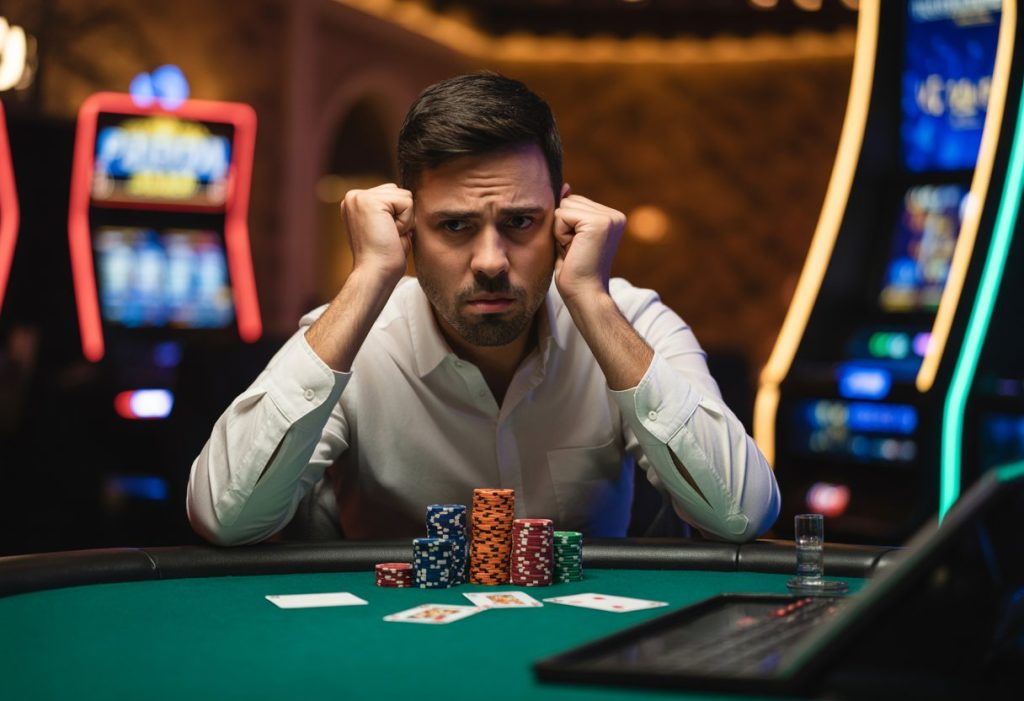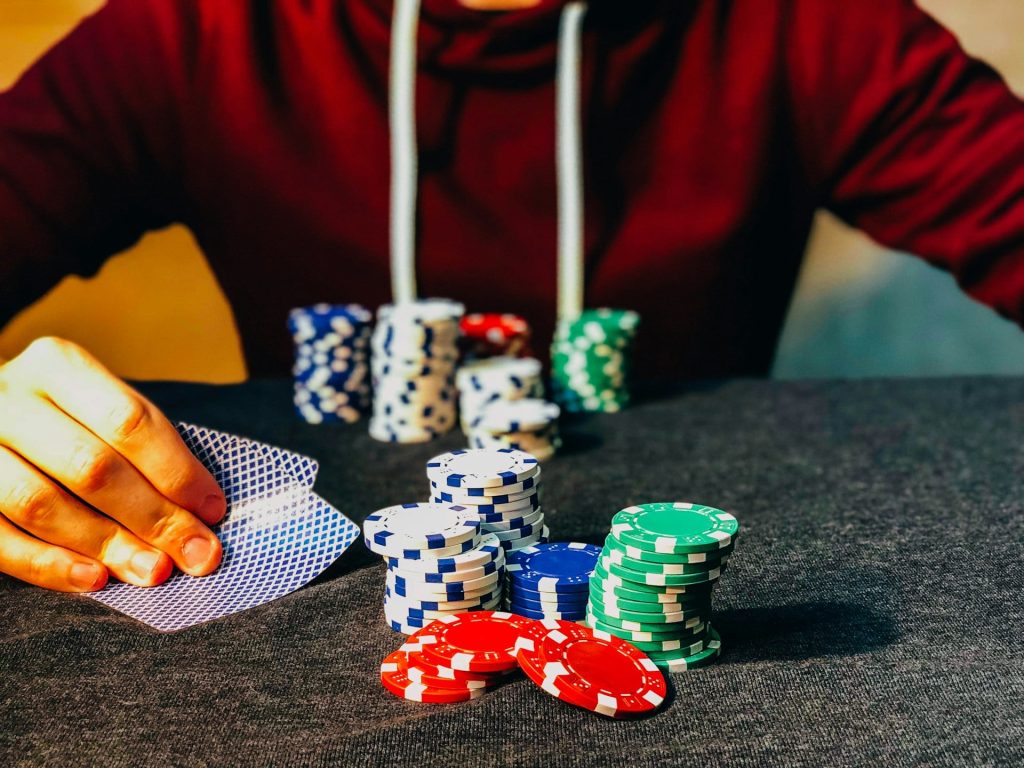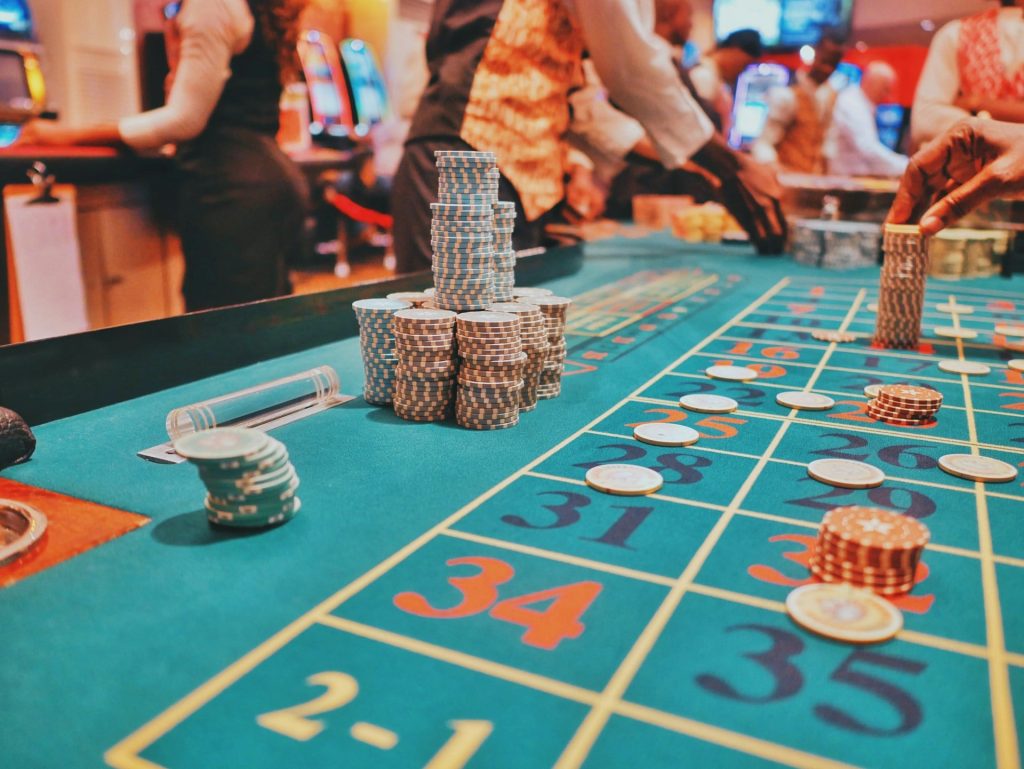Have you ever found yourself betting more money after losing, hoping to win back what you lost? Studies show that up to 80% of people who gamble experience this urge to chase their losses at some point.
This guide explores the psychology of chasing losses in betting and reveals why our brains trick us into making these risky choices. You might be surprised by what drives this common gambling behavior.
What is Chasing Losses in Betting?

Now that we understand the scope of this issue, let’s examine what loss-chasing actually means in gambling contexts.
Chasing losses describes the dangerous pattern where gamblers increase their bets or continue playing to recover money they’ve already lost. This gambling behavior creates a vicious cycle that traps many problem gamblers.
Players believe their next bet will break even and erase previous losses. Slot machines and table games exploit this mindset through variable ratio reinforcement schedules. Compulsive gamblers often experience this pattern during both within-session chasing and between-session chasing episodes.
Loss aversion drives this destructive behavior, making losses feel twice as painful as equivalent wins feel good. Pathological gamblers frequently double down on bad bets, convinced they can outsmart the system.
Casino games are specifically designed to trigger chasing behavior through near-miss outcomes and the illusion of control. Problem gambling escalates when bettors refuse to accept losses and walk away.
This cycle affects millions of Americans, leading many to seek gambling addiction treatment and support from organizations like Gamblers Anonymous.
The Psychology Behind Chasing Losses
People chase losses because their brains trick them into making bad choices. Strong feelings and quick reactions push gamblers to bet more money after they lose.
Emotional triggers and impulsivity
Emotional triggers play a huge role in chasing losses during gambling. Stress, anger, and sadness push gamblers to make quick decisions. These feelings cloud judgment and lead to poor choices.
Gamblers often bet more money to escape negative emotions. This creates a dangerous pattern where emotions drive gambling behavior instead of logic.
Impulsiveness makes the problem worse. Gamblers with gambling addiction struggle to control their urges. They act without thinking about the consequences. Brain scans show that problem gambling affects areas that control impulses.
Habitual gamblers have trouble stopping even when they know they should quit. Their reward system becomes overactive, making them crave the next bet. This impulsive behavior leads to bigger losses and more emotional pain.
The cycle continues as gamblers chase their losses to feel better, but this only makes things worse.
This emotional and impulsive behavior connects closely to how the brain tricks gamblers into thinking they have control over random outcomes.
The illusion of control and “near-miss” outcomes
The illusion of control drives many gamblers to believe they can influence random outcomes. Slot machines and casino games exploit this false belief by creating patterns that seem predictable.
Players often think they can time their bets or use special strategies to win. This mental trap makes people feel powerful over pure chance events. Near-miss outcomes fuel this dangerous thinking pattern even more.
Near-miss results occur when gamblers almost win but fall just short. Slot machines show two matching symbols with the third one space away. These close calls trigger the same brain reward pathways as actual wins.
Research shows that near-miss outcomes increase gambling behavior more than clear losses. Players interpret these moments as proof they are getting closer to victory. The brain releases dopamine during these experiences, creating false hope.
This cycle keeps people playing longer and betting more money. These psychological tricks lead directly to the cognitive biases that shape gambling decisions.
The illusion of control is perhaps the most dangerous cognitive bias in gambling, making random events feel predictable and manageable.
Cognitive biases influencing decision-making
Cognitive biases influence gamblers’ decision-making, often leading to persistent betting behavior. Confirmation bias causes players to focus primarily on wins while disregarding losses.
They recall a significant jackpot but overlook numerous unsuccessful wagers. Availability bias makes recent wins seem more likely to recur. A player who recently won at slots might expect another win soon.
Gambler’s fallacy misleads people into thinking past results influence future outcomes. After several losses in craps, many anticipate a win is imminent.
Loss aversion makes losing feel significantly more impactful than winning. This can lead to increased betting in attempts to recover losses. Overconfidence bias persuades players they can predict outcomes more accurately than chance allows.
Many gamblers believe they possess unique skills or strategies that overcome the odds. Hot-hand fallacy creates perceived patterns where none actually exist. Players pursue streaks that are simply random chance.
These mental shortcuts, which typically assist in quick decision-making, become problematic in gambling contexts.
Neurocognitive Perspectives on Loss-Chasing
Your brain plays tricks on you when you chase losses in gambling. The reward pathways in your brain release dopamine each time you place a bet. This chemical makes you feel good and want to bet more.
Your brain treats gambling like a drug addiction. The same areas light up when gamblers see slot machines as when drug addicts see their substance of choice.
Executive functions in your brain help you make smart choices. These functions get weaker when you chase losses. You start making poor decisions without thinking them through. Your brain’s emotional regulation system also breaks down.
You feel more stress and anxiety but keep betting anyway.
The Iowa Gambling Task shows how gambling problems affect your brain. People with gambling disorders pick risky options more often. They ignore warning signs that healthy brains would catch.
Their brains don’t learn from mistakes the same way.
Positive reinforcement keeps you hooked on gambling. Every small win makes your brain want more. Negative reinfor.
Role of dopamine and reward pathways
Dopamine acts as the brain’s reward chemical. This powerful substance floods the brain each time a gambler wins or even comes close to winning. The brain’s reward pathways light up during gambling activities, creating intense feelings of pleasure and excitement.
These pathways evolved to help humans survive by rewarding beneficial behaviors like eating and reproduction. Gambling hijacks these same systems, tricking the brain into thinking it needs to keep betting to feel good.
Problem gambling changes how the brain responds to rewards over time. Regular gamblers need bigger wins to feel the same rush they once got from smaller victories. The brain reduces its natural dopamine production, making everyday activities feel less rewarding.
This creates a vicious cycle where gamblers chase bigger losses to recreate that initial high. Brain scans show that people with gambling addiction have similar changes to those seen in drug addiction.
The reward pathways become less sensitive, pushing gamblers to take greater risks for the same dopamine release.
Impulsivity and compulsivity in gambling behavior
Impulsive gambling happens when people make quick bets without thinking. These gamblers act on sudden urges and cannot control their actions. Research shows that problem gambling often starts with impulsive decisions.
People with gambling disorder struggle to pause before placing bets. Their brains push them to gamble right away, even when they know the risks.
Compulsive gambling takes impulsivity one step further. Compulsive gamblers feel they must bet, even after losing money. This creates a vicious cycle that becomes hard to break. Studies reveal that pathological gambling shares traits with other addictive behaviors.
The urge to gamble grows stronger over time. Many people describe feeling trapped by their gambling behavior, unable to stop despite mounting losses.
Behavioral Economics and Loss-Chasing
Behavioral economics shows us why people make poor choices when gambling. Prospect theory explains how gamblers take bigger risks to avoid losses than to gain wins. The sunk cost fallacy tricks players into thinking they must keep betting to recover money they already lost.
These mental traps create a dangerous pattern where each loss leads to bigger bets and deeper problems. Want to learn how your brain works against you at the casino?
Prospect theory and risk-taking behavior
Prospect theory shows how people make decisions under risk. This theory explains why gamblers chase losses even when logic says they should stop. People feel losses twice as hard as they feel wins of the same size.
This loss aversion drives risky gambling behavior. A person who loses $100 feels much worse than they feel good about winning $100. This uneven feeling pushes them to take bigger risks to get back to breaking even.
Gamblers often think about their losses as money they must win back. They see each new bet as a chance to recover what they lost. This thinking creates a vicious cycle where small losses grow into big ones.
The brain treats potential wins differently than actual losses. Decision makers focus more on avoiding the pain of losing than on the joy of winning. This mental trap keeps people gambling long after they should quit.
Problem gambling feeds on this basic human tendency to chase what we have already lost.
Sunk cost fallacy in gambling decisions
The sunk cost fallacy drives many gambling decisions and creates a vicious cycle for players. This mental trap makes people think they must keep betting to recover money they already lost.
Gamblers tell themselves that stopping now means all previous losses were for nothing. Their brain tricks them into believing that past bets somehow increase their chances of winning future ones.
Problem gambling often starts when players fall into this thinking pattern.
Decision-makers in gambling situations ignore basic math and logic. They focus on money already spent instead of looking at each new bet as a separate choice. A person might lose $500 at online casinos and then bet another $200 trying to “break even.” The original $500 is gone forever, but the sunk cost fallacy makes them risk even more money.
This chasing behavior leads to bigger losses and deeper financial trouble. Understanding how loss aversion affects the brain helps explain why people make these poor gambling choices.
Consequences of Chasing Losses
Chasing losses creates a vicious cycle that destroys both wallets and minds, turning casual bettors into problem gambling victims who lose far more than money.
Escalation of financial losses
Chasing losses creates a dangerous pattern that drains bank accounts fast. Gamblers often double their bets after each loss, thinking they can win back what they lost. This strategy backfires most of the time.
Each new bet puts more money at risk. The vicious cycle grows stronger with each failed attempt. Many people start with small bets but end up risking huge amounts. Problem gambling experts see this pattern daily in their work.
Financial damage spreads beyond the initial losses. Credit cards max out quickly when people chase their losses. Some gamblers take cash advances or borrow money from friends and family.
Others dip into savings accounts meant for emergencies. The National Council on Problem Gambling reports that pathological gambling can lead to bankruptcy. Breaking even becomes harder as the debt pile grows larger.
This emotional and psychological toll affects not just the gambler but their loved ones too.
Emotional and psychological toll
Chasing losses creates severe emotional damage that goes far beyond money problems. People caught in this vicious cycle often feel deep shame, guilt, and anxiety about their gambling behavior.
Depression becomes common as losses pile up and relationships suffer. The constant stress of hiding debts and lying to loved ones takes a heavy toll on mental health. Many develop sleep problems, panic attacks, and lose interest in activities they once enjoyed.
The psychological impact spreads to every part of life. Self-esteem drops as people feel they have lost control over their actions. Family relationships break down under the weight of broken promises and financial strain.
Work performance suffers as gambling thoughts take over daily focus. Some people turn to alcohol or drugs to cope with the pain of their gambling addiction. The National Council on Problem Gambling reports that people with gambling disorder have higher rates of suicide attempts than those with other mental disorders.
How to Prevent Chasing Losses
Breaking the cycle of chasing losses starts with setting clear limits before you place your first bet. Smart gamblers use self-regulation strategies like setting daily spending caps and time limits to protect themselves from making poor decisions.
Many people find success with digital tools that track their gambling behavior and send alerts when they approach their limits. The key lies in recognizing early warning signs like feeling angry after losses or thinking about gambling constantly.
Want to discover the specific techniques that help thousands of people regain control of their gambling habits?
Setting limits and self-regulation strategies
Setting clear boundaries before you start gambling can stop the vicious cycle of chasing losses. Decide how much money you can afford to lose before you place your first bet. Write this amount down and stick to it no matter what happens.
Many successful gamblers set daily, weekly, and monthly limits to control their gambling behavior. Time limits work just as well as money limits. Set a timer on your phone and walk away when it goes off.
Self-regulation strategies help you make better decisions when emotions run high.
Automatic tools can help you stay on track when willpower fails. Most online gambling sites offer deposit limits, loss limits, and session time limits. Use these features to protect yourself from impulsive decisions.
Keep a gambling diary to track your wins, losses, and emotions. This simple practice helps you spot patterns in your chasing behavior. Take regular breaks during gambling sessions to clear your mind.
Step outside, call a friend, or do something completely different for at least 15 minutes. These strategies work best when you practice them before problem gambling takes hold.
The emotional and psychological toll of chasing losses can be severe and long-lasting.
Recognizing warning signs of problem gambling
Spotting problem gambling signs early helps prevent serious issues. People with gambling disorder often chase losses by betting more money to win back what they lost. This chasing behavior creates a vicious cycle that gets worse over time.
Common warning signs include lying about gambling activities, borrowing money to gamble, and feeling anxious or depressed after losing. Gamblers may also neglect work, family, or personal responsibilities to spend more time gambling.
Physical symptoms can appear too. Problem gamblers often have trouble sleeping, lose their appetite, or experience headaches from stress. They might hide their gambling from loved ones or become defensive about their betting habits.
The National Council on Problem Gambling reports that people with gambling addiction often gamble longer than planned and feel unable to stop. Breaking even becomes their main goal, but this rarely happens.
These warning signs show that gambling has moved from fun activity to serious behavioral addiction that needs professional help.
Treatment and Support for Gambling Addiction
Getting help for gambling addiction requires professional support and proven treatment methods that address both the mental and behavioral aspects of this serious condition.
Cognitive-behavioral therapy (CBT)
Cognitive-behavioral therapy (CBT) stands as the most effective treatment for gambling addiction. This proven approach helps people identify harmful thought patterns that drive chasing behavior.
CBT teaches clients to recognize triggers that lead to gambling urges. Therapists work with patients to develop healthy coping skills that replace the need to gamble. Many people discover they use gambling to escape stress or negative emotions.
The therapy focuses on changing both thoughts and actions related to problem gambling.
CBT sessions typically last 12 to 16 weeks with trained mental health professionals. Clients learn to challenge the illusion of control that makes them think they can predict gambling outcomes.
The treatment addresses cognitive biases that fuel the vicious cycle of chasing losses. People practice new ways to handle urges without placing bets. Research shows that 60% to 80% of people who complete CBT programs significantly reduce their gambling behavior.
The National Council on Problem Gaming recommends CBT as a first-line treatment for gambling disorder. Many clients report feeling more confident about making decisions without gambling after completing therapy.
Support groups and helplines
Support groups offer a safe space for people dealing with gambling addiction. These groups connect individuals who face similar struggles with chasing losses and problem gambling. Members share their experiences and learn from others who understand their challenges.
The National Council on Problem Gambling sponsors many local support groups across the country. Gamblers Anonymous follows a twelve-step program that has helped thousands break free from the vicious cycle of gambling behavior.
Online support communities provide 24/7 access to peer support and guidance.
Helplines provide immediate assistance for those experiencing gambling disorder. Trained counselors answer calls and offer crisis intervention services. The National Problem Gambling Helpline (1-800-522-4700) operates around the clock and connects callers to local resources.
Many states run their own gambling helplines with specialized knowledge about regional treatment options. Text and chat services reach younger people who prefer digital communication.
These services help individuals recognize warning signs of pathological gambling and take the first steps toward gambling recovery.
Digital tools for responsible gambling
Digital tools for responsible gambling have become powerful allies in the fight against gambling addiction. Mobile apps now track spending patterns and send alerts before players exceed their budgets.
Many online casinos offer built-in features that let users set daily, weekly, or monthly limits on deposits and losses. These platforms automatically block access once limits are reached, preventing impulsive decisions during emotional moments.
Self-exclusion programs allow gamblers to ban themselves from specific sites or all gambling platforms for set periods.
Smart technology goes beyond simple blocking features to provide real-time support. AI-powered systems analyze gambling behavior patterns and detect early warning signs of problem gambling.
Some apps connect users directly to counselors through chat or video calls during crisis moments. Budgeting tools help track gambling expenses alongside regular bills and savings goals.
These digital solutions make breaking even seem more achievable by showing clear financial pictures. Many tools also provide educational content about the psychology behind chasing losses and the vicious cycle that traps many players.
Conclusion
Chasing losses creates a vicious cycle that traps many gamblers in destructive patterns. Breaking even becomes an impossible goal when emotions drive betting decisions instead of logic.
Cognitive-behavioral therapy and support groups from organizations like the National Council on Problem Gambling offer proven paths to gambling recovery. Self-regulation strategies and digital tools help prevent problem gambling before it escalates into a full gambling disorder.
Your awareness of these psychological triggers gives you the power to recognize warning signs and seek help when gambling behavior becomes harmful.




